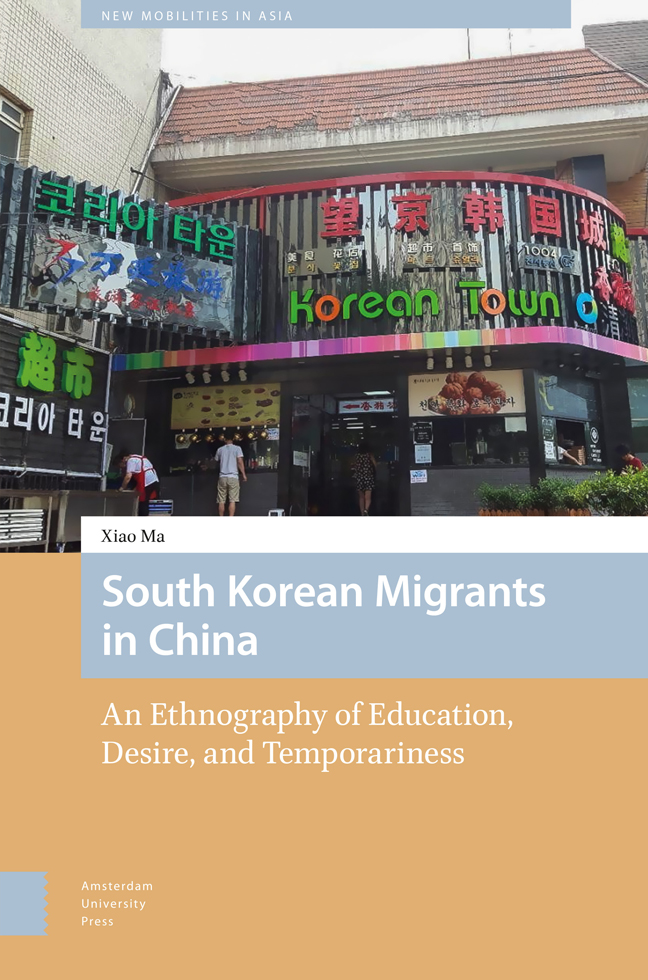Book contents
- Frontmatter
- Contents
- List of Illustrations
- Acknowledgements
- 1 Introduction
- 2 Temporary Residents’ Community in Beijing
- 3 The Internationalised Education of China and the Globalised Education of South Korea
- 4 Educational Desire in School Choice: Identities of Home, Destination and the World
- 5 Desirable Homecoming: The Pursuit of Tertiary Education in the Context of Temporary Migration Regimes
- 6 Internationalisation in Chinese Education: The Quest for Entry to a Top Chinese University
- 7 Conclusion
- Index
2 - Temporary Residents’ Community in Beijing
Published online by Cambridge University Press: 26 March 2024
- Frontmatter
- Contents
- List of Illustrations
- Acknowledgements
- 1 Introduction
- 2 Temporary Residents’ Community in Beijing
- 3 The Internationalised Education of China and the Globalised Education of South Korea
- 4 Educational Desire in School Choice: Identities of Home, Destination and the World
- 5 Desirable Homecoming: The Pursuit of Tertiary Education in the Context of Temporary Migration Regimes
- 6 Internationalisation in Chinese Education: The Quest for Entry to a Top Chinese University
- 7 Conclusion
- Index
Summary
Abstract
This chapter provides an overview of South Korean migration to China over the past three decades. It then describes the emergence, growth and decline of the ‘Koreatown(s)’ in Beijing over the past two decades, which I call the ‘temporary residents’ community.’ I also investigate the various forms of ethnic incorporation that occur, focusing on intra- and inter-ethnic group relations while discuss the declining role of ethnicity in ethnic community building. The findings reveal the temporariness of Korean migration and settlement in China and the multifaceted, diverse reasons underlying this. The data in this chapter was collected from a wide range of academic literature, government documents, news reports (in Chinese, Korean and English), interviews and participant observation during fieldwork.
Keywords: Koreatown, temporary resident, Beijing, ethnic incorporation
My first visit to Wangjing, known as ‘Koreatown’, in Beijing on a summer afternoon in 2011 was rather disappointing. Strolling along the wide, bustling main avenues of Guangshun North Street and Guangshun South Street, I noticed that office buildings, commercial centres and shopping malls were predominately Chinese or international rather than showing conspicuous signs of being Korean businesses. At the central square near the Wangjing subway station, I chatted with some people and found that none of them originated from South Korea. Even more frustrating, Mrs Zhang, the director of the local neighbourhood committee (juweihui), told me that since the 2008 global financial crisis, South Korean residents had left Koreatown in large numbers as they were no longer able to maintain their residence and business arrangements.
This first impression of Koreatown raised a number of questions in my mind: why are Koreans driven to come to China and why do they choose to leave? Why are they settling in such a temporary and vulnerable way? And further, how can I understand such a Korean community in China? Would it be distinguishable from the Chinatowns, Koreatowns, or other ethnic communities discussed in the well-documented literature that hinges on the North American context (Min 1996; Zhou 1995; Wilson and Portes 1980). These questions propelled my initial motivation to explore Koreans, their migration trajectories towards China and the Koreatown(s) in Beijing.
- Type
- Chapter
- Information
- South Korean Migrants in ChinaAn Ethnography of Education, Desire, and Temporariness, pp. 39 - 74Publisher: Amsterdam University PressPrint publication year: 2024

